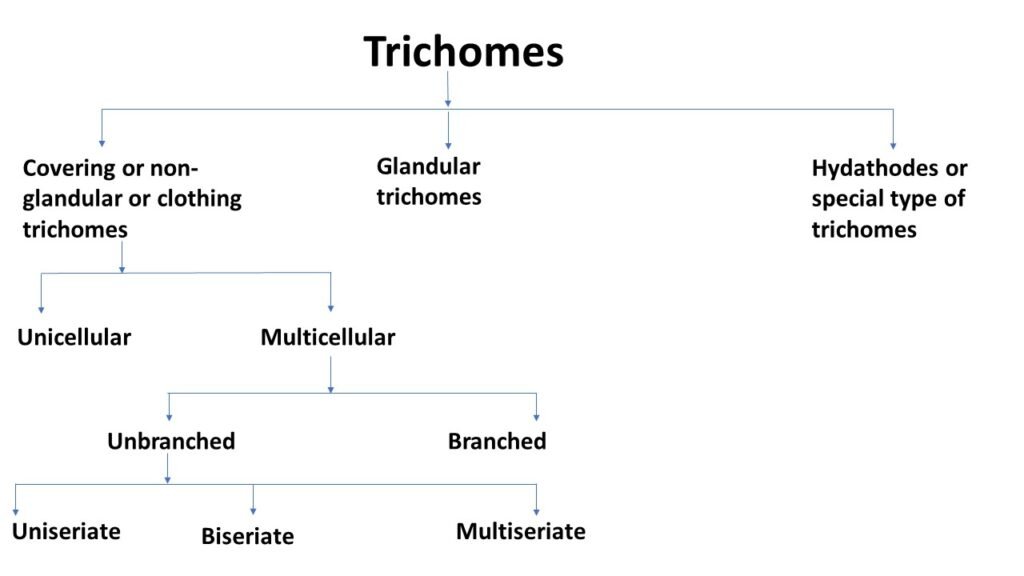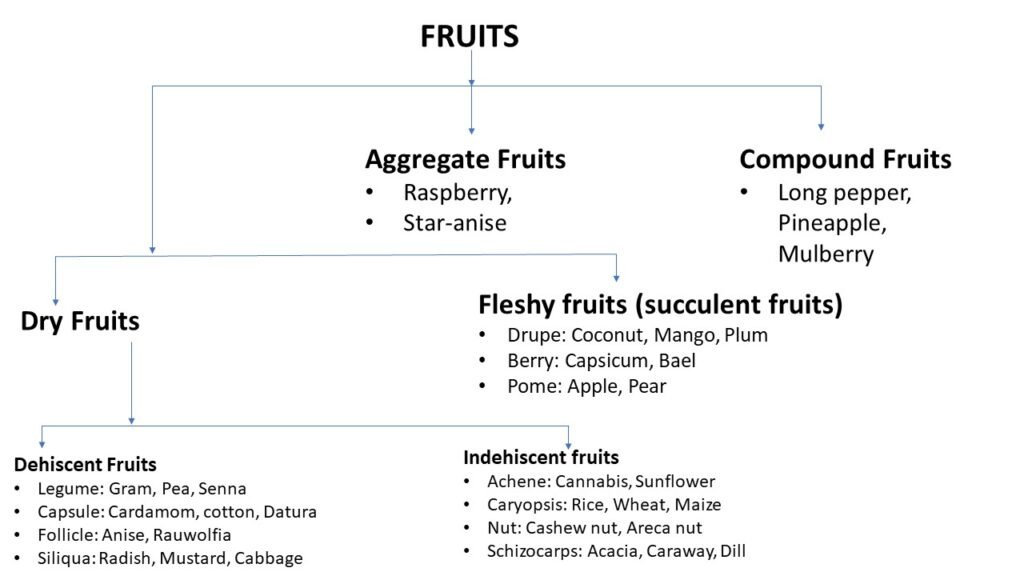Introduction
The chemical substances from natural origin, either used directly or indirectly without modifying its chemical composition is called as crude drugs. Crude drugs mainly categorize in two main categories one is organised crude drugs and other is unorganised crude drugs. Organised crude drugs are the direct organs of the plant or animals for example, flower, seeds, bark, root, insect etc. Unorganized crude drugs are the parts of plant or animal which is extracted from them for example, juices, raisins, etc.
Organised crude drugs
Organised drugs are cellular organisation with some specific anatomical features. Mostly these drugs are from the plant sources. The morphological part of plant or entire plant can be called as organized crude drug. We will study some of the important plant parts.
Leaves
There are various leaves which has been used in pharmacy practice as a drug. Leaves are the flat, thin, attachment to the stem.
Important characteristics of leaves
Stomata
A stoma is a minute epidermal opening with a central pore and two kidney shaped cell containing chloroplast known as guard cells. There are two important functions of stomata, primarily gaseous exchange and secondary is transpiration. It is found mostly in green parts of the plant.
Depending on the type of guard cells and arrangement of subsidiary cells stomata are classified in four types,
- Moss type
- Gymnospermous type
- Gramineous type
- Dicotyledonous type
The dicotyledonous type of stomata is further divided into five types,
- Paracytic or rubiaceous or parallel-celled stomata
- Diacytic or caryophyllaceous or cross-celled stomata
- Anisocytic or cruciferous or unequal-celled stomata
- Anomocytic or ranunculaceous or irregular-celled stomata
- Actinocytic or radiate-celled stomata
Leaf constants
- Vein-islet number: It is the number of vein islets per sq. mm of the leaf surface midway between the midrib and margin.
- Vein-termination number: It is the number of veinlet termination per sq. mm of the leaf surface midway between midrib and margin.
- Stomatal number: It is the number of average stomata per sq. mm of epidermis of the leaf.
- Stomatal index: It is the ratio of number of stomata to the total number of epidermal cells.
- Palisade ratio: It is the average number of palisade cells in each epidermal cell. It can be determined by using powered drug.
Water pores
Water pores are the minute openings present on leaf margin for the transpiration purpose. The transpiration helps in photosynthesis. They resemble in some extent to the stomata in structure and functions.
Trichomes
Trichomes are the tubular elongated or glandular outgrowth of epidermal cell. They are also called as plant hairs. Trichomes perform secretory function. Trichomes are made up of two parts one is in the epidermis (root) and other is outside the epidermis (body). Based on their structure and number of cells present in trichome they are classified as follows,

Barks
Bark is also known as periderm which consist of three layers, cork (phellem), cork cambium (phellogen) and secondary cortex (phelloderm).
Shapes of barks
| Shape | Method of preparation | Example |
| Flat | Removed from large tree and dried under pressure | Arjuna, Quillaia |
| Curved | Removed from small branches, shrinkage of soft tissues. Concavity is inside of the bark. | Cassia, wild cherry |
| Recurved | When curve (concave) outside the bark. | Kurchi |
| Channelled | When shrinkage of tissue is more it forms trough or channel | Ashoka, cinchona |
| Quill | When one edge of bark covers another edge | Cinnamon |
| Double quill | When both edges rolled independently | Java cinnamon |
Methods of collecting barks
Barks are collected in a season when they contain maximum concentration of active constituent. Some methods of collecting barks are,
- Felling method: In this method tree is cut at base and bark is peeled. This is old method and presently not in use commercially.
- Uprooting method: In this method roots of the plant are dug out of the soil and bark is ripped from them.
- Coppicing method: In this method plant is cut off from a specific distance from soil. The remaining stumps are allowed to grow aerial parts. As compared to others this is an economical technique and used commercially.
Stems
Stem is an ascending axis of plant developed from the plumule. It may be aerial, sub aerial or underground. They are categorised in to parts depending on presence of mechanical tissue. One is weak stem and another is herbaceous or woody stem.
Weak stem
These are thin and long. They are unable to stand erect. They are further subclassifies as,
- Creepers or prostate stem: Grow flat on the ground without roots. For example, grasses, gokhru.
- Climbers: These are very weak and climb on the support with the help of tendrils, hooks, prickles or roots. For example, piper betel, piper longum.
- Twinners: These are also weak. Twinners coil the support and grow further. For example, ipomoea, Phaseolus.
Herbaceous or woody stem
These are the most commonly found stem. They may be soft or hard and woody. For example, sunflower, sugarcane, ephedra.
Woods
In plants the tissues produced by cambium on inner side are collectively known as wood. It mainly consists of secondary xylem and smaller number of tissues. They are of two types, heart wood or duramen and sap wood or alburnum.
Heart wood: It is the innermost central region of stem or root, which is non-functioning, non-living part for the mechanical support. It is mostly dark coloured due to presence of several chemical substances like tannins, pigments, gums and resins.
Sap wood: It is the outer region of the wood. It is the only functional wood conducting water and food material to plants.
Flowers
Flower is the modified shoot for the seed production. Flower is built upon stem or pedicel with the enlarged end (thalamus). Typical flower consists of four different circles (whorls) arranged in a definite manner. Flower has four whorls as follows,
Calyx: It is the outermost whorl and generally green in colour. Individual member is called as sepal.
Corolla: It is white or bright in colour. Individual member is known as the petal.
Androecium: It constitutes he male part of the plant. Individual component is called as stamen and consists of filament, anther and connective.
Gynoecium: It is the innermost circle and constitutes the female part of plant. Individual component is known as carpel or pistil and consists of stigma, style and ovary.
Fruits

After fertilization, ovules of the flower get converted into seeds and ovary wall develops to form the protective covering (pericarp) over seed, which is known as fruit. If the ovule does not fertilize, seedless fruits are formed. There are three layers of pericarp as follows,
Epicarp: It is the outermost coating and may be thin, thick or woody.
Mesocarp: This is the middle layer and may be pulpy or spongy parenchymatous tissue.
Endocarp: It is the innermost layer and may be thin, thick or even woody.
False fruits
Sometimes other floral parts like thalamus, receptacle or calyx grow and form the part of the fruit is known as false fruit or pseudocarp. For example,
- Strawberry (thalamus)
- Cashew nut (peduncle and thalamus)
- Apple (thalamus)
- Marking nut (peduncle)
- Rose (thalamus)
Seeds
The fertilized ovule is known as the seed. It is the condensed form of life. The seed has three parts namely, embryo, endosperm (nutritive tissue) and seed coat. Depending on the presence of endosperm seeds are classified as,
- Endospermic or albuminous seeds: colchicum, isapgol.
- Non-endospermic or exalbuminous: sunflower, tamarind.
- Perispermic seeds: pepper, cardamom.
Underground drugs
There are two underground parts of plant which are used as underground drugs. One is root and another is sub-aerial modification or underground stem.
Roots
Root is the downward growth of stem of plant into the soil. Branches of roots grow from pericyclic tissues. Roots are covered by root heads or root caps.
Types of roots
There are three types of root system.
Taproots: Taproot is the main central root on which root hairs are attached. Example carrot and beetroot.
Fibrous roots: These are the bushy roots in which thin and moderately branching roots grow from the stem. Example, rice and wheat.
Adventitious roots: These are the roots that arises from any other point other than radicle. These appear during developmental stages or response to stressful events like flooding, damage or nutrient deficiency. They specifically available on underground stems like rhizomes, corms and tubers.
Some important modifications of underground stem are as follows,
Rhizomes: The rhizomes are developed horizontally under the soil. They function as the storage organ of plant. They are thick and fleshy in structure. For example, ginger, turmeric, rhubarb.
Tuber: Tubers are the storage stem of certain seed plants. They are characterized by presence of eyes from vegetative buds. They are swollen (thick and short) underground structure of plant. Example, potato and jalap.
Bulb: Bulb is a modified stem which is usually a globe shaped underground bud with membranous or fleshy overlapping leaves. Example, onion and garlic.
Corm: Corms are the vertical and fleshy underground modifications of stem. They function as food storage structure in certain seed plant. Example, saffron and colchicum.
Sub-aerial modifications of stem
Runner: They creep on ground. Example, strawberry.
Stolon: Lateral branches of stem, growing horizontally. Example, jasmine.
Offsets: Arises from axil of the leaf. Examples, aloe.
Sucker: Lateral branches of underground stem. Example, banana.
Entire organism
Sometimes the major portion of plant or animal used as a drug. These plants or animals categorized as entire organisms. For example, cannabis, datura, belladonna, cochineal, leach.
Unorganized drugs
These are the drugs obtained from plants or animal sources by extraction, distillation or incision methods. They are solid, semisolid or liquid in nature. They can be identified by organoleptic properties. some examples of unorganized drugs are given below.
| Unorganized drug | Example |
| Dries latex | opium |
| Dried juice | aloe |
| Dried extracts | agar, black catechu, pale catechu |
| Waxes | bees wax, spermaceti |
| Gums | acacia gum, Guar gum |
| Natural resins | colophony, jalap resin |
| Oleoresins | capsicum, podophyllum |
| Balsams | balsam of tolu, benzoin, storax |
| Oleogum resin | asafoetida |
| Volatile oil | turpentine, sandal wood, coriander, clove |
| Fixed oil and fats | castor, sesame, olive oil |
| Animal products | cod liver oil, gelatin, shark liver oil, wool fat |
| Fossil organisms and minerals | bentonite, talc |
Frequently asked questions
What is the difference between gums and mucilage?
| Gums | Mucilage |
| Gums are produced by plant in unfavourable condition or injury | Mucilages are the normal product of plant growth. |
| It is produced outside the cell | It is produced inside the cell |
| Gums are soluble in water | Mucilages are insoluble in water |
| E.g. Gum karaya, gum acacia | E.g. Esapghol, senna |
What are emergences (prickles)?
These are the small extension on epidermal walls of the aerial part of the plants. These are the pointed sharp in structure meant for plant protection.
What is hilum?
It is the point of attachment of seed to stalk.
What are three layers of pericarp in fruit?
There are three different layers in pericarp,
- Epicarp: outermost layer
- Mesocarp: middle layer
- Endocarp: innermost layer
For more regular updates you can visit our social media accounts,
Instagram: Follow us
Facebook: Follow us
WhatsApp: Join us
Telegram: Join us
